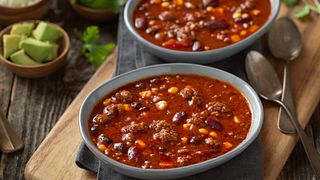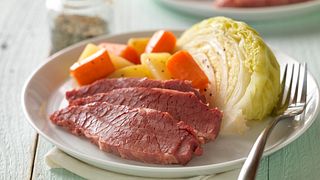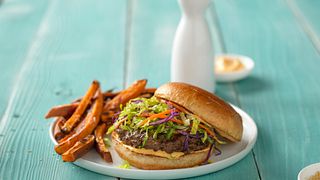Regional Differences in Consumers’ Love of Beef
july 17, 2019
Consumers crave beef for its taste; yet they also value the variety, versatility, convenience and strength-providing nutrients it provides, whether for quick occasions or a sit-down meal.1 But how do shoppers’ choices vary by geography? Considering cuts, grinds, product type and quality grade, this article explores retail beef sales by the eight U.S. regions to uncover purchase patterns for beef.2
Americans have long been avid consumers of beef. Strong demand for beef at retail has driven production higher, and U.S. per capita retail meat case beef volumes have increased 12% since 2014, to 17.1 pounds in 2018.3 Not surprisingly, this varies by region. Chart 1 shows how consumers in the South Central states purchased the most retail meat case beef in 2018 (21.0 pounds), followed by those in the Plains (18.6 pounds) and West (18.2 pounds), while California shoppers trailed at 13.0 pounds per capita. Since 2014, however, all regions have increased their beef consumption with those in the West purchasing 16% more pounds than in 2014, while Southeast consumers purchased 8% more beef.
Source: IRI/Freshlook, Total US MULO ending 5/26/19; Categorized by VMMeat System
Exploring retail beef sales by product form or type, regional differences emerge. Chart 2 reveals how those in the Midwest and Plains are the most avid buyers of Ground Beef at 46% and 45% of spend, respectively, while Californians and those in the West favor steaks, at 40% and 38% of dollars, respectively. Californians also spend the greatest share of their beef dollars on roasts (15%), undoubtedly driven by their Tri-Tip cravings. These overarching patterns align with higher Hispanic and Asian populations in the Western U.S., as these cuisines favor whole muscle beef dishes as compared to traditional middle-American fare. Ribs sell best in California while Cubes & Strips are more prominent in the Northeast. Finally, South Central consumers spend 12% of their beef dollars on “other,” which includes their number one cut (by pounds), the Deckle-Off Brisket, the Texas barbecue mainstay.
Source: IRI/Freshlook, Total US MULO ending 5/26/19; Categorized by VMMeat System
As to beef grinds, 70-77% lean averages 38% of Ground Beef sales across the US, peaking at 50% for the Plains, however, it accounts for a mere 16% of sales from Maine to Pennsylvania. This Northeast region is the clear outlier here, where leaner grinds sell progressively better than in any other region (Chart 3). The popularity of primal grinds also varies widely, with Ground Chuck accounting for 24% of Southeast grind sales but just 2% in the Northeast. Ground Round and Sirloin reach their highest shares in the Southeast at 6% and 7%, respectively, as well, making the Southeast the premier region for primal grinds. On the other hand, Ground Trim and Meat Loaf propel “Other” to 10% of Northeast sales.
Source: IRI/Freshlook, Total US MULO ending 5/26/19; Categorized by VMMeat System
Quality grade also varies across region, perhaps more than might be expected. While USDA Choice beef accounts for 89% of whole muscle beef sales, this share drops to just 68% in the South Central states (Chart 4). Lower median incomes (particularly for Arkansas and Louisiana, which rank 47th and 50th of the states and D.C., while Oklahoma and Texas fail to reach the top half) may influence this pattern of purchasing the more economical Select grade. Interestingly, the South Central is the only region where Prime sales round up to 2% of total, suggesting some divergence of fortune. Chart 5, confirms this quality grade lean is about more than just a love of Brisket, as the South Central region accounts for the vast majority of Select grade cut sales from all primals, particularly those from the Chuck and Rib (83% for each). While the South Central consumer may have limited resources, they still purchase the highest per capita volume of beef at retail.
Source: IRI/Freshlook, Total US MULO ending 5/26/19; Categorized by VMMeat System
Source: IRI/Freshlook, Total US MULO ending 5/26/19; Categorized by VMMeat System
Regardless of region, beef remains a mainstay for retailers across the U.S. While norms exist, distinctive patterns – driven by culinary traditions and demographics – emerge across geographies. Beef enables consumers to have a wide range of experiences by cut, grade and grind, be it grill, slow cooker or stove, and mixed with a range of ingredients, flavors or spices. Beef. It's What's For Dinner.
- Consumer Beef Tracker, July 2019, NCBA
- IRI splits each of four US Census Regions in two to create the following eight point-of-sales data regions.
- IRI/Freshlook, Total US MULO ending 5/26/19; Categorized by VMMeat System
- Median Household Income by State, Table H-8, US Census Bureau





